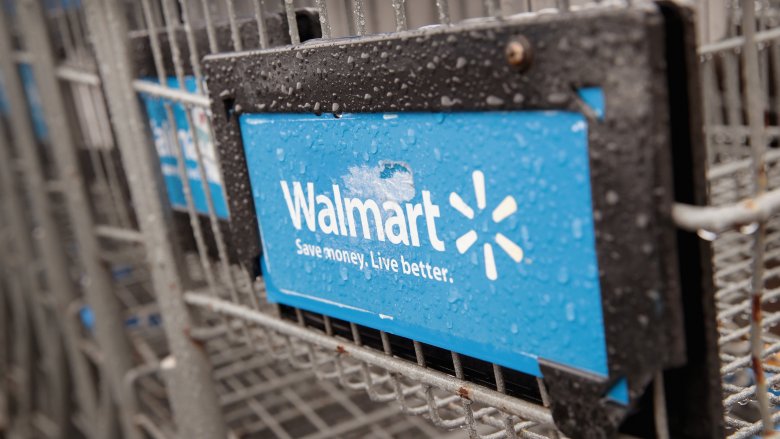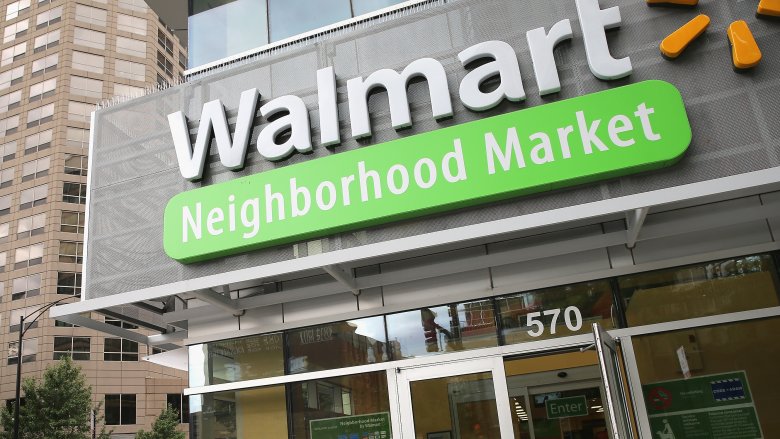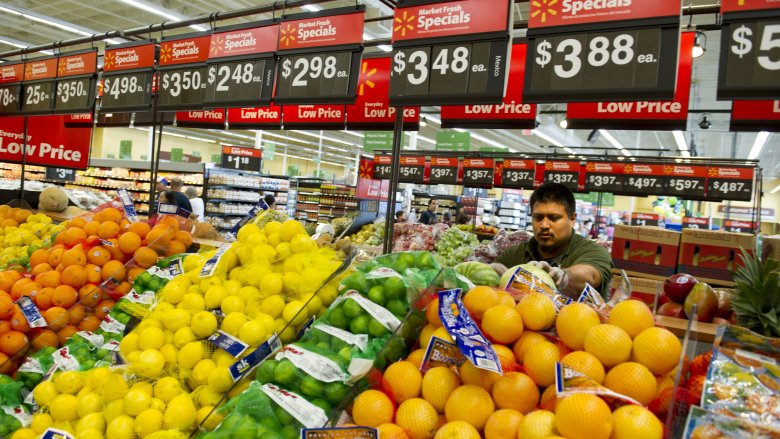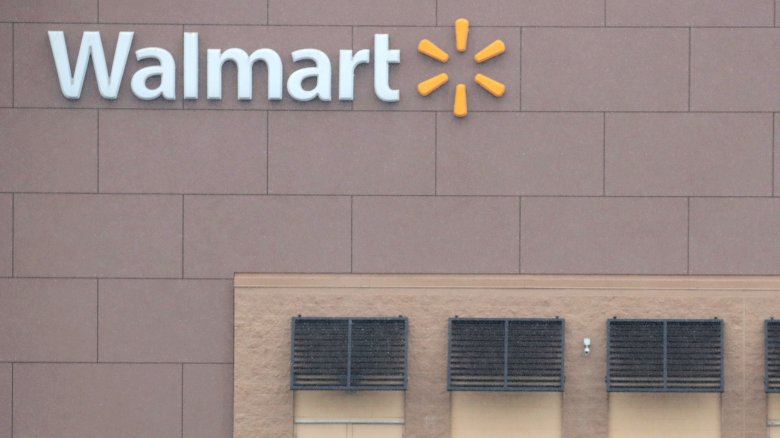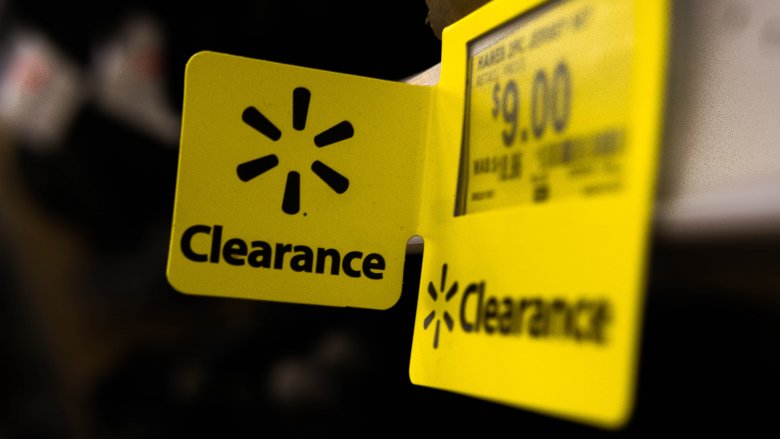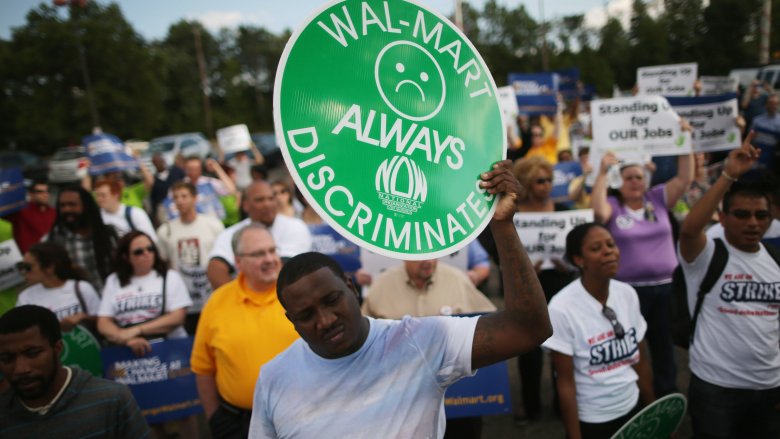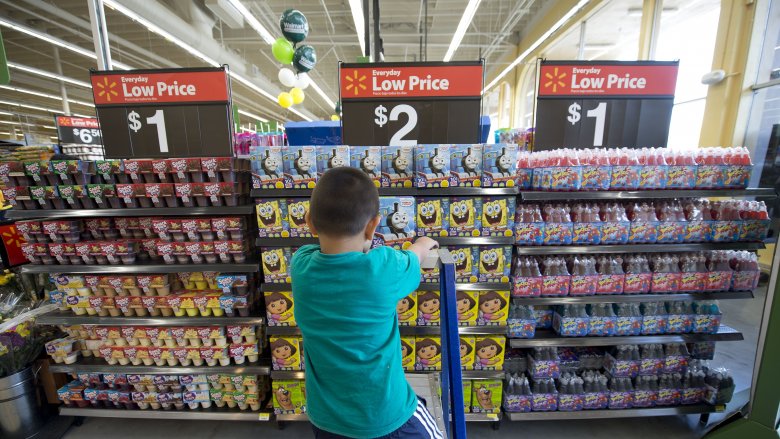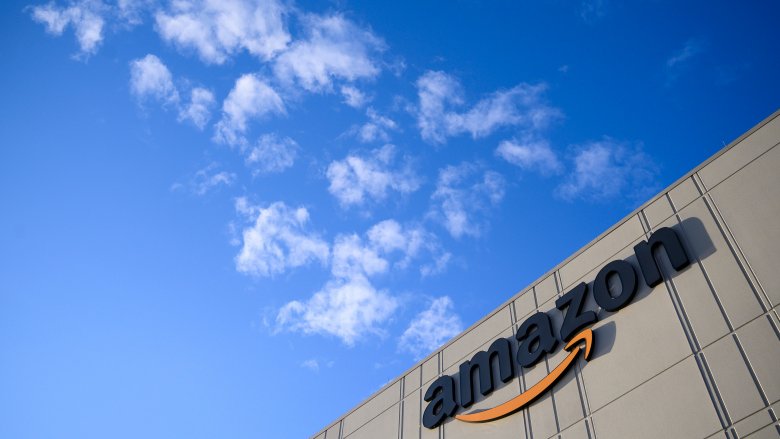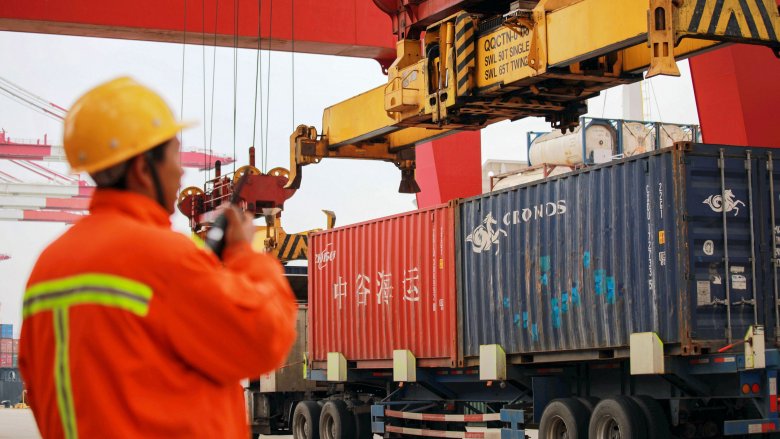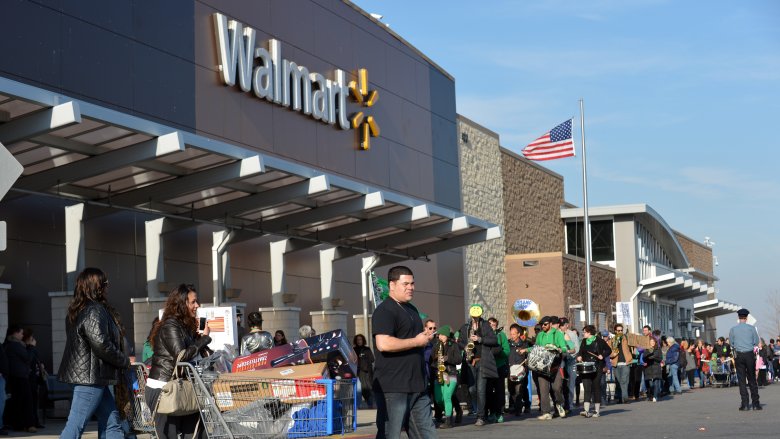The Real Reason Walmart Is Closing Down Stores
For a long time, Walmart seemed like the unstoppable juggernaut of the retail world. As much as people claimed to hate them, those same people couldn't help but shop there. They had almost everything you could possibly want, all in one place, and all for prices you just couldn't beat. But at the same time, they were pushing the little guys out of business... and that just didn't sit well with many.
In 2016, they announced (via CNBC) that they would be closing 269 stores worldwide — a move that impacted the jobs of around 16,000 people. The idea was that they were going to be shifting their focus to Neighborhood Markets and Supercenters — though they were also closing some of those stores in over-saturated markets. The new stores would be located in their most lucrative markets.
But fast forward to 2019, and word got out (via Business Insider) that Walmart would be closing nine more stores in the U.S. Those stores were the same Neighborhood Markets and Supercenters they were focusing on expanding just three years prior... so what gives?
Neighborhood Markets haven't been reliable performers
Way back in ye olden days of 2016, Walmart said (via CNBC) they were planing to focus on their new Neighborhood Market format. These smaller stores were designed to be exactly that — smaller — to compete with the likes of Trader Joe's and other small-format neighborhood stores. But according to the Business Journal, they haven't been reliable performers at all. By 2013, they had 286 stores, and over the course of the next four years, they had opened 676 more of them. But during that same time period, they also closed 130 of the relatively new stores.
Official statements suggest those stores closed because of poor performance, and according to Walmart's official stance on the 2019 closings, that became a huge factor again. When they issued statements on each individual closing, there was one line that stood out: "The decision is based on several factors including the store's overall performance."
Walmart went on to say that they're going to be focusing on other innovations and improvements to the brand, with a focus on those meant to be time- and money-saving. But if that was supposed to be the point of the smaller stores in the first place, what went wrong? Business Journal says it seems like Walmart is still tweaking the format of the stores so they can hit on something that resonates with people, but is that all that's going on? Nope.
The CEO says they're only "50 percent"
Comments from Walmart's US CEO, Greg Foran, seem to suggest that not all is well within the corporate giant.
In the early days of March 2019 — not long before the closings were announced — Business Insider was reporting on some pretty harsh comments Foran made at the UBS Global Consumer and Retail Conference.
"I'd say we're at about 50 percent of where we should be," Foran said. "I get out to stores every single week. About half the time I'm OK with it, and the other half I'm grumpy."
No one wants a grumpy boss, especially when Foran went on to list all the problems he was seeing time and time again. Those were things like poor customer service, low stock and inventory levels, and nowhere near the varied assortment he wanted.
Another huge problem was freshness. Walmart has been making steps toward increasing the quality and selection of their fresh foods and private-label brands, but Foran says they're nowhere near where they want to be. "Fresh has been a big deal, and we haven't even got close to arriving on fresh. I still go into stores and the wet wall — leafy greens — quality isn't good... But it's better than it was."
They're struggling to find a format that works
There was a time not too long ago that Walmart was pretty much the same no matter where customers were. Those days are gone, and now, they're not focusing so much on the supercenters like the one slated for closing in 2019.
Three years prior — when they announced an even larger series of closings — they were at what Retail Dive called "a cross-roads." Even as they were shifting their focus from brick-and-mortar stores to e-commerce, they were trying new formats to see what would strike a chord with consumers and get them coming into the stores. Walmart Express stores had been rolling out in urban markets in 2011, and were gone by 2014. Neighborhood Markets took their place, and when they struggled, they went the way of the dodo, too.
Simply put, Walmart is trying to figure out what consumers want, and when they fail, they're not afraid to pull the plug, cut their losses, and move on.
They're not opening many stores, either
There's a very telling thing happening at Walmart, and it's not just about how many stores they're closing — it's about how few stores they're opening, too. According to Yahoo! Finance, Walmart had more than 3,500 supercenters in the U.S. market as of early 2019. That's important, because it puts it into stark focus just how few new stores were being opened: 15 in 2018, and 10 in 2019.
Rather than opening new stores, Walmart plans on overhauling — or closing — stores that were already open. The includes things like rolling out their grocery pickup program, and a grocery delivery service. They're hoping it's money well spent, because even a company that has expenditures of $11 billion a year only has so much money to go around.
Business Insider says the shift in focus isn't unexpected, and there's another simple reason for their shift in focus, their slow growth, and their closings: they've simply opened as many stores as is financially viable, and the U.S. just doesn't need more Walmarts and Walmart off-shoots.
They've got a bad image
Let's ask this: do you know anyone who's proud to shop at Walmart? Or is it more of a dirty little secret, with customers that sort of run in, get what they need, and run out? It's probably mostly the latter, and according to Forbes, Walmart's cutthroat image has been a major problem for them.
In fact, Walmart has a ton of image problems: sure, they're known for low prices, but they're also known for leaning on small retailers, dirty, messy, and disorganized stores, poor customer service, a complete lack of training for employees, and management — from store managers to high-level executives — that are just completely out of touch with the idea that they need customers, and they need to relate to them.
And why on earth would anyone choose to shop at a place with a reputation like that, especially when there are so many other choices?
It's a supply problem
If you've gone into Walmart recently and not found what you're looking for, you're not alone. According to Reuters, the 2018 holiday period wasn't a good time for Walmart — and that's a critical time of the year for any retailer, big or small. Share prices dropped a whopping 9.4 percent, and while sales were up, they weren't up nearly as much as they had been in previous years, and not nearly as much as the sales of one of their biggest competitors, Amazon.
And there were a few reasons for that. Experts say that Walmart hasn't been great at figuring out just how much they need to keep in stock to satisfy online sales and orders, and at the same time, they're slipping a bit with what they're offering in-store, too. While they filled the aisles with holiday merchandise from decorations to electronics and gift items, they slipped on their everyday sorts of merchandise — you know, the stuff a lot of people go to Walmart to find. And that hurt their bottom line, something that causes a ripple effect seen across the brand.
The Amazon factor and the online shopping takeover
And then there's the elephant in the room: Amazon. According to Investor's Business Daily, Walmart fired their first serious shots at Amazon in 2016 with the acquisition of Jet.com and the major establishment of their online presence. They might be holding their own, but according to what CEO Doug McMillon told Business Insider in early 2018, the slowdown they were seeing in their profits as they switched gears from brick-and-mortar stores to an online shopping presence was "planned and expected."
But there were also the higher costs Walmart incurred trying to make themselves as appealing as Amazon is. That includes things like offering free shipping and mobile returns, and that's a huge deal. It's a bit ironic, too: Amazon is often touted as being the low-price, uber-convenient, one-stop-shop that Walmart once was, and now that Walmart is trying to play catch-up with them... the tables have turned.
And by the end of 2018, Business Insider was calling Walmart's shift from opening more and more supercenters to beefing up their online presence an inevitable shift in their business model, one that was needed if they want to stay relevant.
Increased tariffs are lowering profits
It's no secret that the political landscape of the entire world is, well, chaotic. It's being felt by everyone, and that includes Walmart.
Walmart has notoriously been shipping in many products from overseas for years, and in 2018, the U.S. government and President Donald Trump leveled a ton of tariffs on goods coming into the country from China. Starting on January 1, 2019, CNBC reported that duties would rise to 25 percent on products — and that's been crippling not only Walmart, but hundreds of businesses who have appealed to the government not to make the move.
Walmart warned government officials that the decision was going to hurt America's consumers in the end, raising the prices they were going to need to pay for countless necessities imported from China. And by February, the Washington Examiner was reporting that when it came to these increased fees, Walmart had chosen to absorb as much of the costs as they could, instead of passing it on to the consumer. Their supply costs had risen by 3.2 percent, and that had, in turn, dragged their profits down severely.
They're been buying new brands like mad
Walmart has been struggling in the face of numerous foes coming from all directions, and even as they're struggling to keep increasing profits as they'd like, they're also trimming back on their projections for just how much profit they're expecting to see in 2019.
According to CNBC, part of that bottom line is going toward acquiring new brands and technologies. One of the biggest is Flipkart — another e-commerce company — as well as companies like Bare Necessities and Eloquii. They're also partnering with other giant corporations like Advance Auto Parts and MGM, and the ultimate goal is to be able to offer online shoppers a wider range of better-quality merchandise. But all that costs money, and experts say the money that's getting poured into their online presence is just money that's not going toward their profits or their brick-and-mortar stores. In today's online world, something has to give — and unfortunately, it's coming at the cost of physical locations — and the jobs that go with them.
